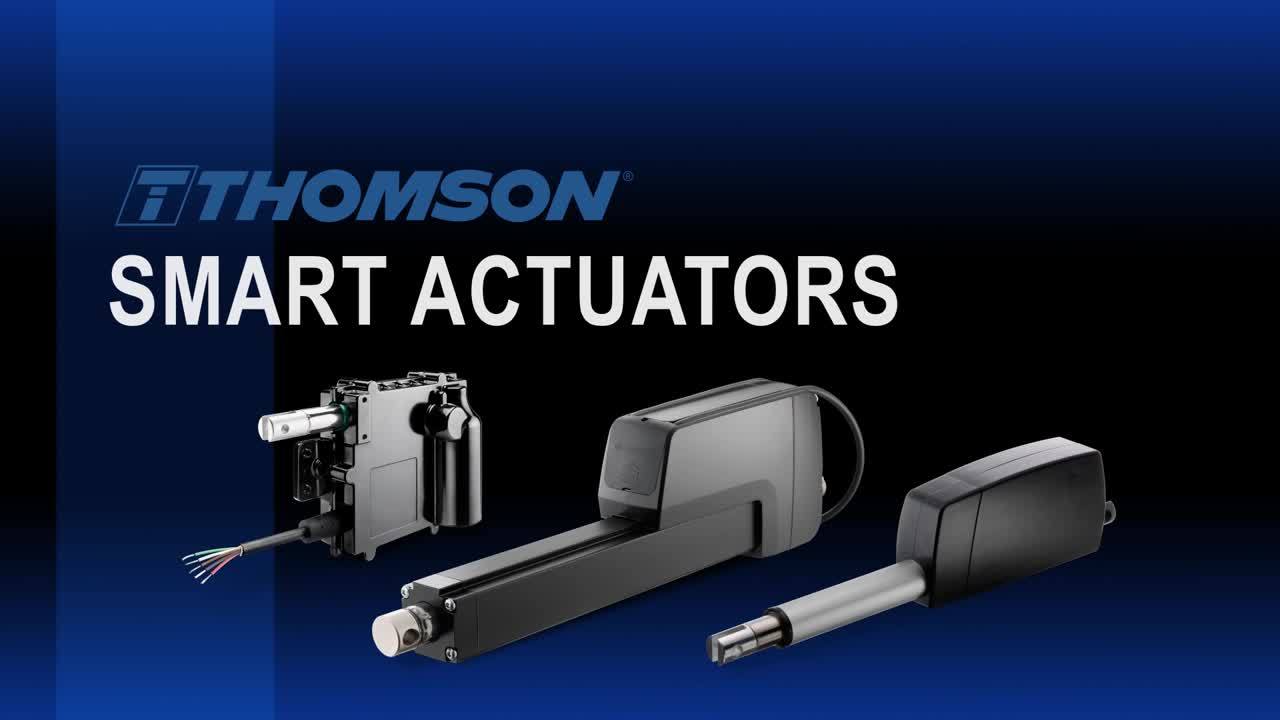Smart Actuation Products
| Actuators | |||||
|---|---|---|---|---|---|
| Electrak® Original Range |
Max Jac | Electrak MD | Electrak Throttle | Electrak HD | |
 |
 |
 |
 |
 |
|
| See Product Details | See Product Details | See Product Details | See Product Details | See Product Details | |
Control Technology Rating |
 |
  |
     |
    |
     |
Position Feedback |
YES / NO | YES / YES | YES / YES | YES / NO | YES / YES |
End-of-Stroke Protection |
YES / NO | NO / NO | NO / YES | YES / YES | NO / YES |
Overload Protection |
YES / NO | NO / NO | NO / YES | YES / YES | NO / YES |
Low-Level Switching |
NO | NO | YES | N0 | YES |
CAN Bus Communication |
NO | NO | YES | YES | YES |
Synchronization |
NO | NO | NO | NO | YES |
Operation Monitoring |
NO | NO | YES / YES | YES / NO | YES / YES |
Load Capacity Rating |
    |
  |
   |
 |
     |
Environmental Protection Rating |
    |
     |
     |
     |
     |
Smart Actuation Feature Definitions
Low-Level Switching


Onboard electronics limits current draw at switches or contacts to a maximum of 22 mA, enabling a simplified and less expensive system design. These low-current signals can be used to program actuators to extend, retract or stop the tube, providing a soft start. This improves safety by reducing the hazard of electrical shock and puts less stress on system batteries and charging systems. An auto sleep feature also helps improve efficiency by reducing power consumption during idle or dwell periods.
Analog Position Feedback



A high-quality potentiometer with essentially infinite resolution and low noise provides a voltage signal for position and direction feedback.
Digital Position Feedback


An encoder provides either a single or double channel pulse train for position and speed feedback, which can be used to synchronize actuators via customer control.
Synchronization

This option allows two or more actuators to share a load. Designers are able to take advantage of a more stable and potentially quicker lift, no additional guides, and improved handling of uneven loads. With these controls integrated into the actuators, installation and system wiring are simplified.
Monitoring and Diagnostics



Constant monitoring of critical parameters such as voltage, speed, force and temperature protects the actuator and machine by preventing motion if outside normal ranges. Current monitoring is a critical safety feature that shuts down the actuator on overload and eliminates the need for the traditional noisy mechanical clutch. Internal endof- stroke limit switches are built into select actuators to ensure smooth, repeatable operation and protect both connected equipment and the actuator.
Simplified Control Architectures



When adding CAN bus, your control system and actuators can communicate directly with each other. The installation is fast and easy, requiring only a two-wire bus cable and power to extend the network, and any other equipment with CAN bus can be connected for additional communication. The result is a less complex system to design, better performance and controllability, and reduced installation time and overall cost.
Remote Access and Communication Protocols



Integrated electronics make it possible for actuators to apply networking standards, such as CANopen or SAE J1939, high-level communications protocols that provide a standard messaging structure for communications among network nodes under control of an electronic control unit. While these protocols are popular for off-highway applications, actuators with integrated electronics are increasingly applied in plant floor, material handling and other applications.

When positioning a sky lift basket, using smart actuators makes it possible to limit movements and avoid potential dangers.



